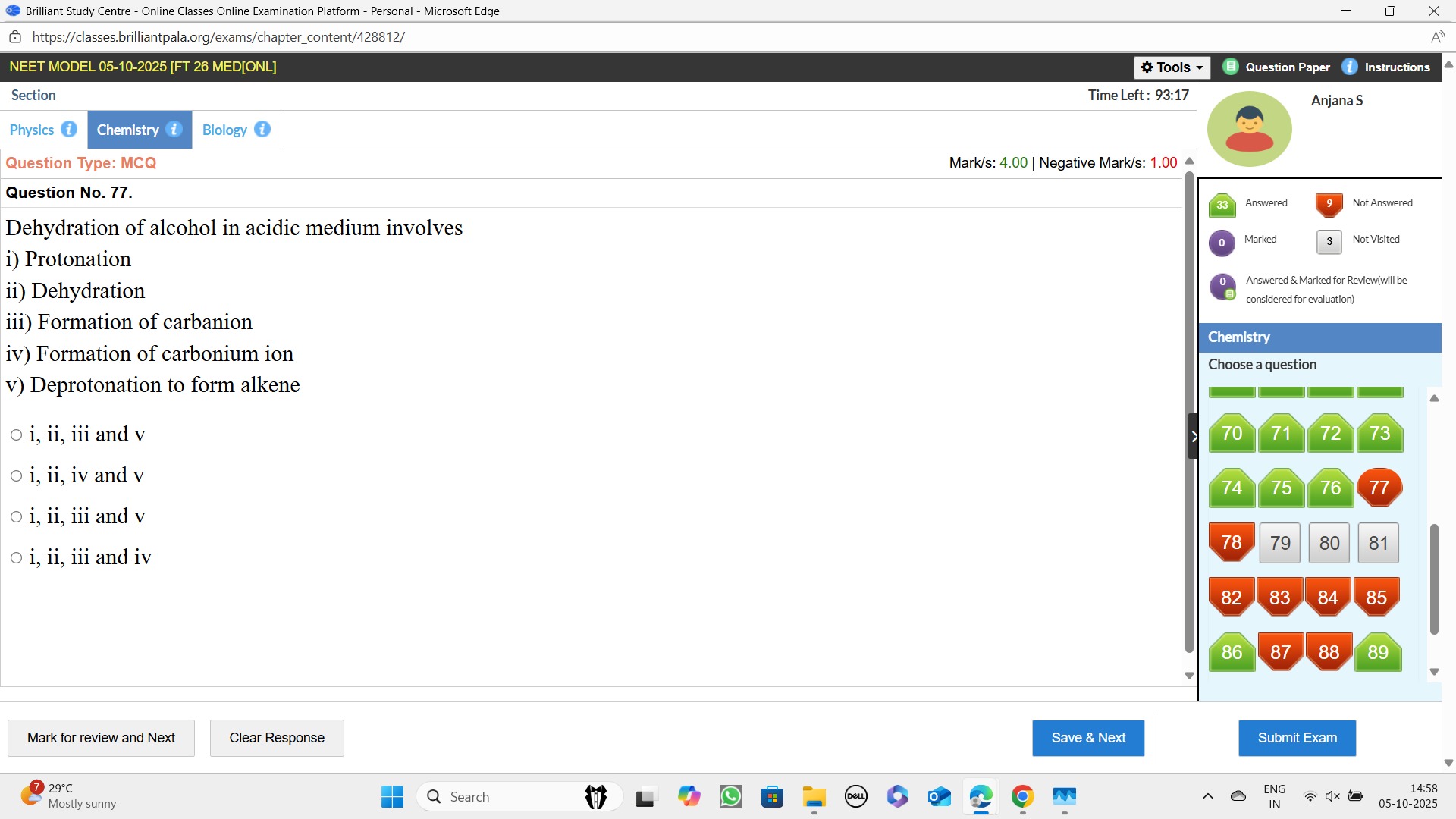Question
Question: Dehydration of alcohol in acidic medium involves...
Dehydration of alcohol in acidic medium involves

i, ii, iii and v
i, ii, iv and v
i, ii, iii and v
i, ii, iii and iv
i, ii, iv and v
Solution
The dehydration of alcohols in acidic medium typically proceeds via an E1 mechanism, especially for secondary and tertiary alcohols. The key steps are:
- Protonation: The oxygen atom of the alcohol molecule is protonated by the acid catalyst, converting the poor leaving group (-OH) into a good leaving group (-OH₂⁺). R−OH+H+⇌R−OH2+
- Formation of Carbonium Ion (Carbocation): The protonated alcohol loses a molecule of water to form a carbocation. This is usually the rate-determining step. R−OH2+→R++H2O
- Deprotonation to form alkene: A base (like water or the conjugate base of the acid) removes a proton from a carbon atom adjacent to the carbocation center, leading to the formation of a carbon-carbon double bond (alkene). R−CH2−CH2++B−→R−CH=CH2+BH
Analyzing the given statements: i) Protonation: This is the initial step. (Correct) ii) Dehydration: This refers to the elimination of water, which occurs when the protonated alcohol loses H₂O to form the carbocation. (Correct) iii) Formation of carbanion: A carbanion is a carbon species with a negative charge. The intermediate formed is a carbocation, which is positively charged. (Incorrect) iv) Formation of carbonium ion: This is an alternative term for carbocation. (Correct) v) Deprotonation to form alkene: This is the final step where a proton is removed to form the alkene. (Correct)
Therefore, the dehydration of alcohol in an acidic medium involves protonation, dehydration (loss of water), formation of a carbonium ion (carbocation), and deprotonation to form the alkene. The correct steps are i, ii, iv, and v.
